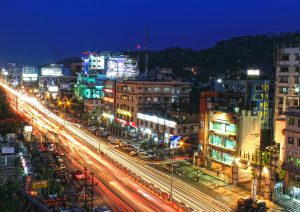A two-week lockdown has been enforced once again in the Indian state of Assam’s capital, Guwahati, which is also the gateway to India’s frontier northeastern region, to control the spread of the coronavirus disease (COVID-19).
The decision by the government comes in the wake of a similar measure in 11 wards of the city’s commercial areas on June 23 after hundreds of people were infected by the virus in the past three weeks.
Until June 27, Assam’s tally of total cases was 6,646, out of which 2,601 were active cases while 4,033 patients had been discharged from hospitals after recovering from the disease. Nine people have so far succumbed to the disease in Assam.
Out of the 10,617 samples tested in Guwahati since June 15, around 700 have tested positive — all without any suspect travel history. Besides the rapid spread of the disease, the government’s decision was also due to the people’s indifference toward observing the guidelines of maintaining social distancing and avoiding large gatherings.
Briefing the media, Assam State Health and Finance Minister Himanta Biswa Sarma said that a “complete lockdown” would be enforced for two weeks through July 12 in the entire Kamrup (Metro) district. This would also entail a total closure of grocery shops, unlike the first phase.
He informed the press that banks and some government offices would continue to function with limited employees while ATMs and medicine shops would remain open.
The government has also enforced a 7 p.m. to 7 a.m. curfew in all districts of Assam and a weekend lockdown on Saturdays and Sundays for the towns and cities in every district.
Besides Assam, several states in India, including Jharkhand and West Bengal, have reimposed lockdowns in a few districts. The total number of COVID-19 infections in the country crossed the 500,000 mark to reach 549,991, including 211,123 active cases and 322,364 recoveries. As many as 16,504 people have died due to the disease.
Incidentally, the northeastern region of India comprising eight states had reported a significantly lower number of cases through the beginning of May when the country entered the third phase of the lockdown. By June, however, the region accounted for than 5,000 cases with Assam taking the lead, followed by Tripura and Manipur.
The sudden increase in the number of COVID-19 cases can be linked to the people who returned to their home states after the opening up of interstate borders in the country on May 17.
Sikkim, in the northeast, which shares borders with China, Bhutan, and Nepal was coronavirus-free through last month, but the number of cases in the state has since soared to more than 60. The government has deferred a reopening of educational institutions until August in addition to imposing a ban on the entry of people from other states and abroad through October.
However, the northeastern states in India have reported a lower number of positive cases as compared to the rest of the country. According to a release issued by the central government on June 26, there were 3,731 active cases in the northeast, while 5,715 patients had recovered so far.
The death rate also continues to be low in the region, without any people succumbing to the disease so far in Manipur, Mizoram, Nagaland, and Sikkim. Meghalaya and Tripura are among the top three states in the country with the highest COVID-19 recovery rates.
Rajeev Bhattacharyya is a senior journalist in Assam, India.

































